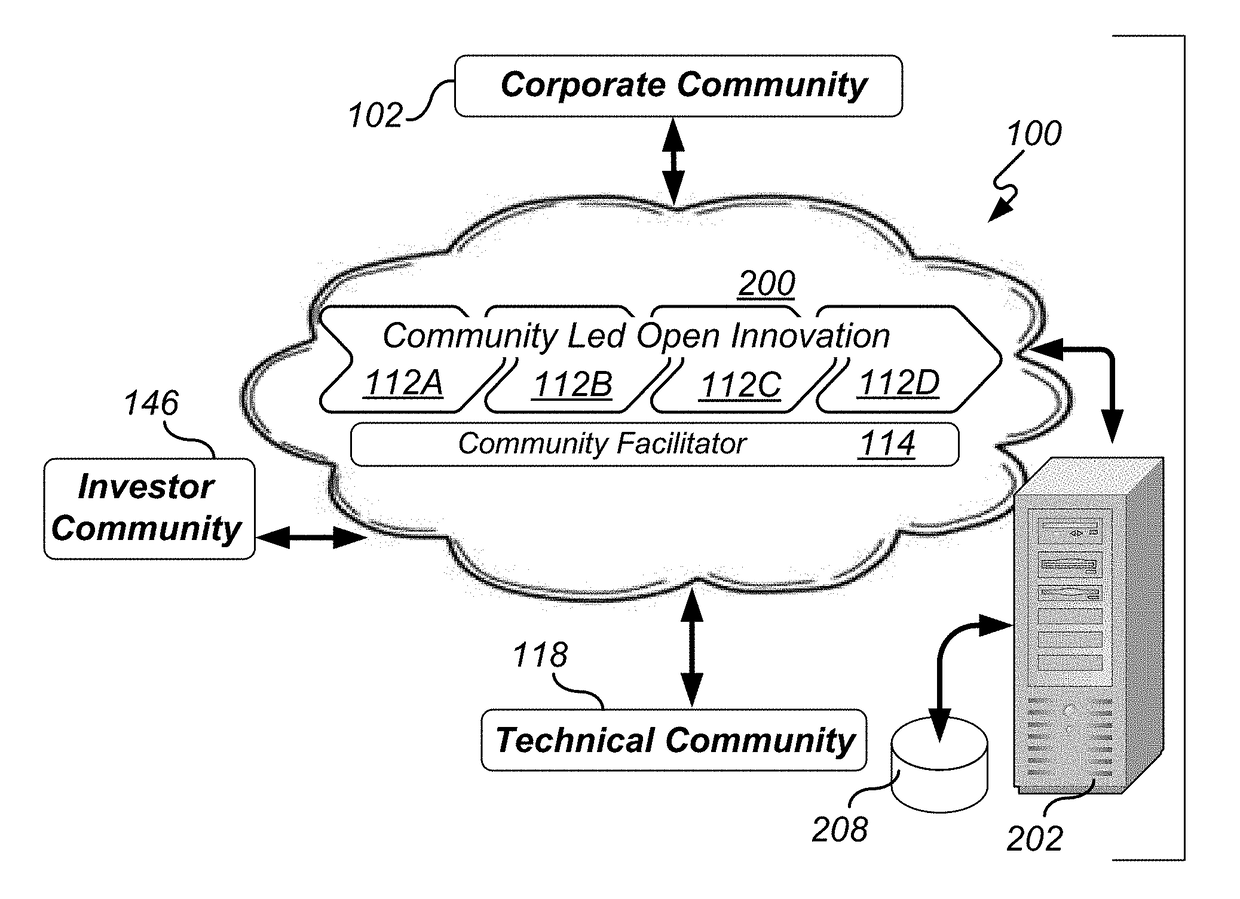Community Led Open Innovation
- Summary
- Abstract
- Description
- Claims
- Application Information
AI Technical Summary
Benefits of technology
Problems solved by technology
Method used
Image
Examples
Embodiment Construction
[0053]Turning now to the drawings in greater detail, it will be seen that in FIG. 2 there is illustrated one example of a COMMUNITY LED OPEN INNOVATION 100 system and method. In this regard, instead of letting each of a plurality of corporations run their own innovation methods which would be at different points of maturity and executed differently, making it confusing to an INVESTOR COMMUNITY and TECHNICAL COMMUNITY, one common COMMUNITY LED OPEN INNOVATION method 112A-D can be implemented in an online community format. In this manner, all participating corporations, within the CORPORATE COMMUNITY 102, utilize the same COMMUNITY LED OPEN INNOVATION 100 system and method. In addition, the INVESTOR COMMUNITY 146 and the TECHNICAL COMMUNITY 118 also both interface to the online community and access the CORPORATE COMMUNITY 102 through a common COMMUNITY LED OPEN INNOVATION 100 system and method.
[0054]Though each of the CORPORATE COMMUNITY 102, INVESTOR COMMUNITY 146, and the TECHNICAL ...
PUM
 Login to View More
Login to View More Abstract
Description
Claims
Application Information
 Login to View More
Login to View More - R&D
- Intellectual Property
- Life Sciences
- Materials
- Tech Scout
- Unparalleled Data Quality
- Higher Quality Content
- 60% Fewer Hallucinations
Browse by: Latest US Patents, China's latest patents, Technical Efficacy Thesaurus, Application Domain, Technology Topic, Popular Technical Reports.
© 2025 PatSnap. All rights reserved.Legal|Privacy policy|Modern Slavery Act Transparency Statement|Sitemap|About US| Contact US: help@patsnap.com



